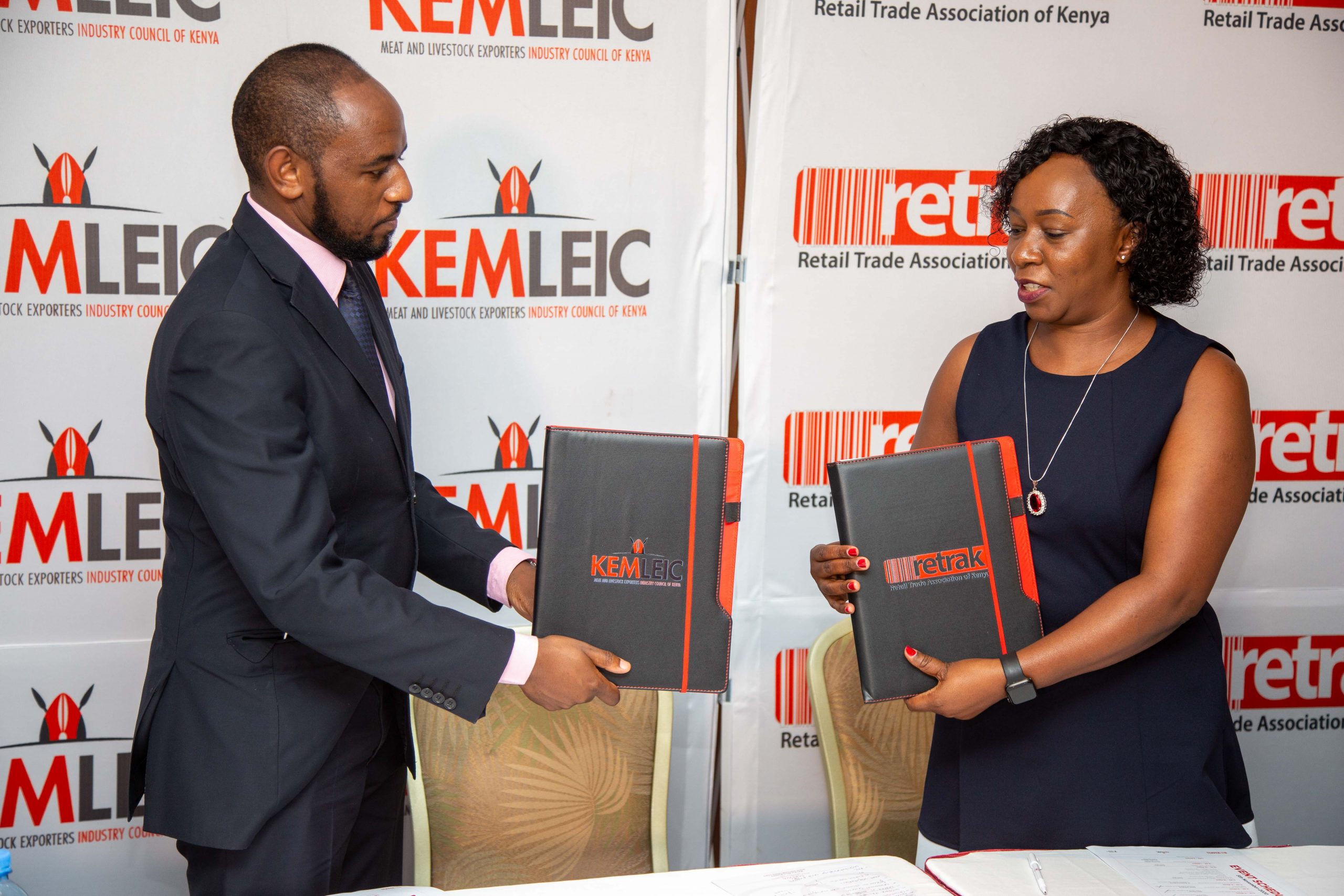The major processors and retailers of meat products have signed a collaboration agreement to apply and promote safe handling and consumption of meat in the country.
The Memorandum of Understanding was signed by the sector’s umbrella organizations – the Retail Trade Association of Kenya (RETRAK) and the Meat and Livestock Exporters Industry Council of Kenya (KEMLEIC) – on the back of studies that have revealed gaps in consumer awareness and perceptions about meat safety and quality.
A consumer awareness survey commissioned by the Kenya Markets Trust in 2019 exposed a gap in information flow to consumers on the quality and use of meat products leading to ill-informed consumer perceptions. This exposed them to consumption of unsafe meat and high costs passed on to them from losses in the value chain.
RETRAK Chief Executive Officer Wambui Mbarire said the two associations had resolved to start a national conversation to educate consumers on the attributes of safe meat.
“How do we ensure that the food being served out of the retail market – be it formal or informal – is safe for consumption and of good quality as we look to reduce the health bill for the average Kenyan?” Ms. Mbarire posed.
Food safety experts estimate that Kenya loses over Sh100 billion annually due to consumption of unsafe foods. This is manifested in the number of man-hours lost during illness and medical costs, among others.
On his part, KEMLEIC CEO Nicholas Ngahu spoke of the difference in standards enforced by the export markets and those adhered to locally. “For export to happen every procedure has to be followed to the letter but if you visit a local slaughterhouse there is almost zero compliance to the safety procedures that have been laid down. Yet that is what ends up in our local butcheries,” he explained.
Kenya’s meat is also ranked among the most expensive per kilo globally, mainly because of lack of modernization in the value chain. For instance, the sector records up to 50 percent mortality losses from birth to sale of livestock and about 12 percent post-harvest losses of meat. The costs are inevitably borne by the consumer.
Under the MoU, the associations committed to short, medium- and long-term objectives that they hope will modernize the local meat market, improve on quality of meat and enhance consumption of more affordable and safe meat by all consumers.
“We will immediately develop and implement a meat handling code of ethics to ensure consumers obtain safe and high-quality meat. Through self-regulation, the industry will adopt safety and quality protocols to be strictly observed from handling of live animals, slaughterhouse, transportation, receiving to the storage of meat at retail outlets,” said Ms. Mbarire.
“Within the next one to two years, we will also embark on accelerated consumer education and awareness on meat quality and promote uptake of the cold chain from the slaughterhouse to the butchery,” added Mr. Ngahu.
In the long term, KEMLEIC and RETRAK want to engage the government to streamline policy and regulations that govern the meat industry to enhance efficiency, enforcement, and implementation by the industry and the government.
Currently, there are more than 40 policies, laws, and regulations governing the meat sector in Kenya, many of them with duplicated mandates. This lack of adequate coordination has created loopholes in food safety controls, exposing consumers in a market where between 70 and 90 percent of the food markets are informal.
See Also>>>> What are the Steaks? Kenya Meat Commission Transferred to Ministry Of Defence












Leave a comment